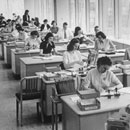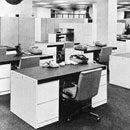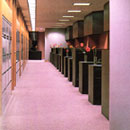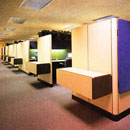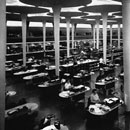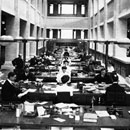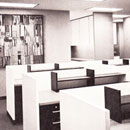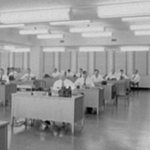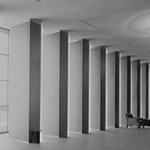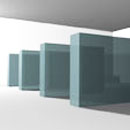
Marching Order
Marching Order is a sequence of repeating forms organized consecutively, one after another, that establish a measured spatial order. more
Marching Order | Workplace
application
In the workplace Marching Order organizes the placement of interior furnishings, such as desks and file cabinets.
research
Description
Found prevalently in open plan offices, Marching Order spatially subdivides a vast open area. Through the uniform and stationary orientation of individual desks and file cabinets, as well as the placement of computers, chairs, and task lamps, a Marching Order creates modules that are offset from each other by a uniform distance,1 emphasizing the regularity of the arrangement and communicating strong messages of how one should circulate throughout and interact within the space.
Effect
In the history of workplace design, private offices have been associated with power, while in the open plan office those who -only have furniture? were perceived to be at a lower rank. Therefore, Marching Order has strong implications about the status and work roles of those who inhabit each workstation or desk. The repetition of each unit symbolically gives the impression of a space where -no one has a permanent office?; each individual is tasked to complete work of similar nature, and may be easily replaced.2
end notes
- 1) Leah Scolere, "Theory Studies: Contemporary Retail Design" (MA Thesis, Cornell University, 2004), 59.
- 2) Franklin Becker, The Successful Office (Boston: Addison-Wesley Publishing Company, 1982), 24.

